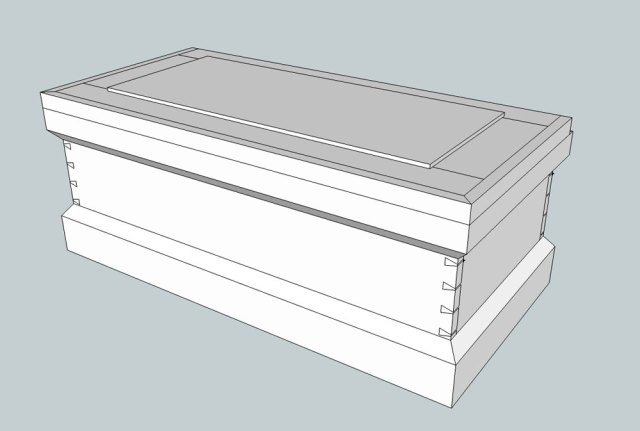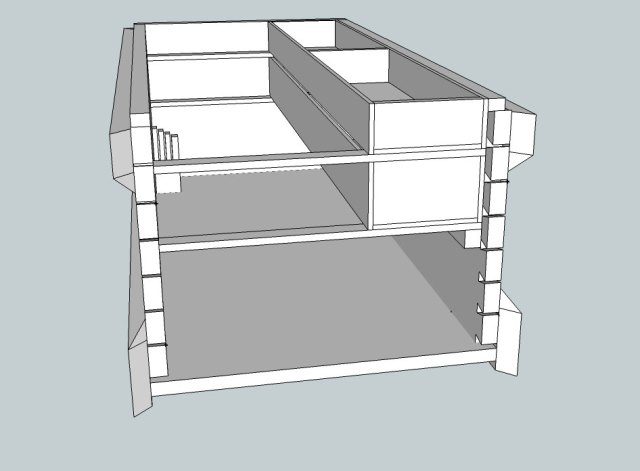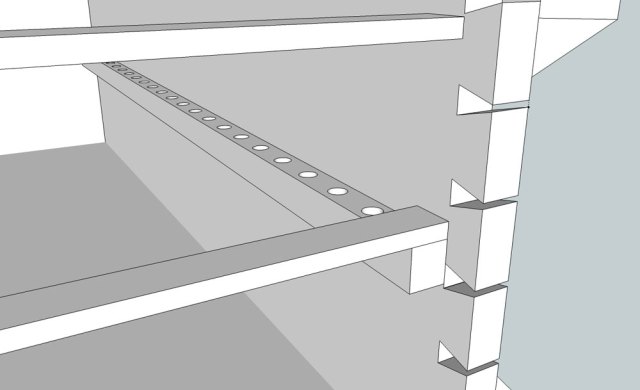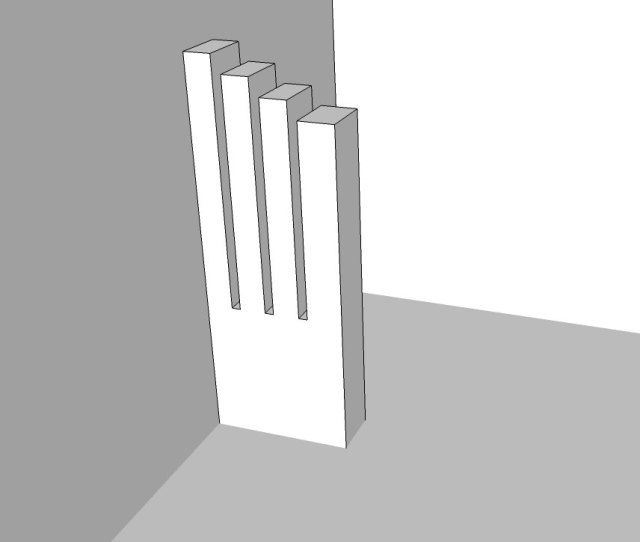
During 2012 I’ll be teaching three classes in building a traditional tool chest. Students will be able to build either the full-size chest from “The Anarchist’s Tool Chest,” or the slightly smaller chest shown here that is designed for traveling.
This chest is based on a historical example I own, and I’ve been surprised at how many tools it can carry. It will hold almost all the tools of a full-size chest, but getting to all these tools isn’t as easy as it is in a full-size chest.
But this smaller chest will fit in a hatchback – something a full-size chest can’t do.
This chest has some interesting features worth exploring. Let’s take a look.

• There are two sliding trays for your small tools, which slide on runners that are screwed to the inside of the chest. In the original, these trays are nailed together (not dovetailed). When I build this chest for my own travels, I will dovetail the trays together.
• The trays are ingeniously positioned so you can fit moulding planes and typical bench planes below the trays without interfering with the way they move. The downside is that the planes must be stored with their soles against the floor of the chest – so you won’t be able to see the profiles of all the moulding planes.

• The back wall of the chest has a tool rack that is pierced with 1/2” holes on 1-1/2” centers. This little rack gives you lots of space to store screwdrivers, awls and other tools with narrow blades. But if you fill the rack you will limit the travel of the sliding trays.

• The sawtill at the front of the chest is a single piece of wood. It holds three saws easily and without taking up much space at all.
• The real downside of the chest is that it is only 15-3/8” high. So if you store it on the floor, you’ll be doing a lot of crouching or bending over. If you store it on your benchtop, I hope you have a huge bench. When I had a bench this size, I stored it on top of a wooden crate that was about 12” tall. That worked.
• The original chest was made of pine boards that were nailed together. I changed the joinery to dovetails. Also, though I don’t show it in the drawing, I recommend you dovetail all the skirting around the shell of the chest – just like I did on the full-size chest in the book.
You can download the plans for this chest for free from Google’s 3D Warehouse. You need Google SketchUp to view the files, but it’s free, too. And if you haven’t gotten your feet wet in SketchUp, I highly recommend you do so – it’s become the design language for woodworkers. [Editor’s note, 2021: The product is now owned by Trimble. There is still a free version available, though it is significantly less robust than the subscription versions.]
Click here to download the plans.
— Christopher Schwarz